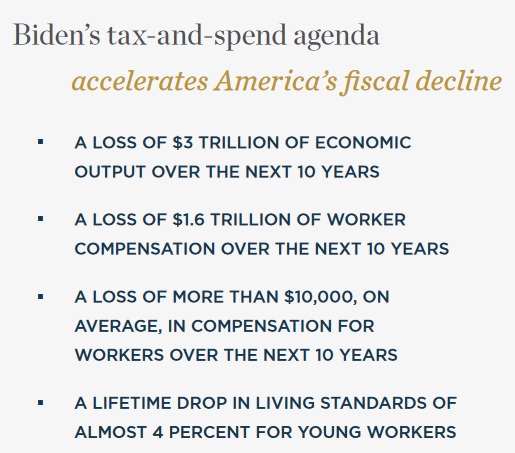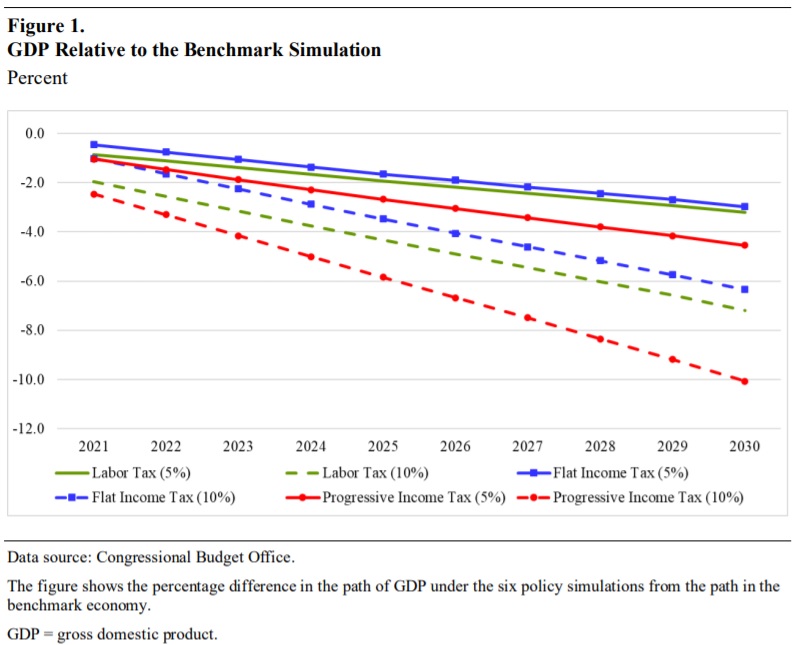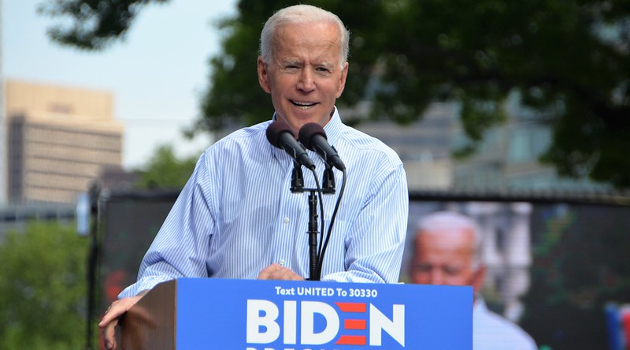More than 12 years ago, I shared this video containing lots of data and research on the negative relationship between government spending and economic performance.
Since then, I’ve share numerous additional studies showing that bigger government dampens growth, mostly from scholars in academia.
Now it’s time for me to directly contribute to this debate.
In a study just published by the Club for Growth Foundation, co-authored with Robert O’Quinn (former Chief Economist at the Department of Labor), we estimated the likely economic impact of President Biden’s so-called Build Back Better plan to expand the welfare state.
Here are our main findings.

What’s especially noteworthy about our study is that we based our analysis on research published earlier this year by the Congressional Budget Office. In other words, a very establishment source.
And here are some excerpts from what we wrote.
President Biden has proposed to increase the burden of federal spending substantially over the next 10 years, diverting nearly $5.5 trillion from the private sector to the government… Most, but not all, of this new spending would be financed with higher tax rates on work, saving, investment, and entrepreneurship. …Based on scholarly academic research, including new findings from the nonpartisan Congressional Budget Office, Biden’s tax-and-spend agenda contained in his reconciliation bill will accelerate America’s fiscal decline and undermine economic performance. …the Biden’s reconciliation bill, which increases the spending burden by 1.9 percent of GDP, will reduce the economy’s growth rate by about 0.2 percent each year. That…translates into more than $3 trillion less national income over the next decade. And the nation’s economic output will be $613 billion lower in 2031 compared to what it would be in the absence of President Biden’s fiscal agenda. …The cumulative loss of employee income over the next 10 years will exceed $1.6 trillion. Some of that will be in the form of lower wages and some of that will be a consequence of lost jobs. On average, each worker in a nonfarm job will lose $10,391 in total compensation.
These results shouldn’t be a surprise.
Biden’s fiscal agenda would made the United States more like Europe and the economic data unambiguously demonstrate that Europeans suffer from significantly lower living standards.
P.S. I especially like the CBO study because it shows the amount of damage caused by more spending varies based on how the outlays are financed.
As this chart illustrates, class-warfare taxation is the worst way of financing a bigger burden of government.

P.P.S. The good news is that Biden probably won’t be able to convince Congress to approve all of his proposals for new spending and higher tax rates. The bad news is even approving half of the Biden’s plan would cause considerable damage to American prosperity and competitiveness.
P.P.P.S. For policy wonks, there are two main types of research involving the economic impact of government spending. For those focusing on short-run economic results, there’s a debate about Keynesian economics – whether more government spending can artificially generate some growth, particularly if the outlays are financed with debt.
I’m skeptical of the Keynesian argument, but it’s not relevant for today’s column, which focuses on how government spending impacts long-run economic results. And when looking at long-run data, most of the research suggests that government is too big. Indeed, it’s worth noting that there’s even research supporting my view from generally left-leaning international bureaucracies such as the World Bank, the International Monetary Fund, the Organization for Economic Cooperation and Development, and the European Central Bank.


